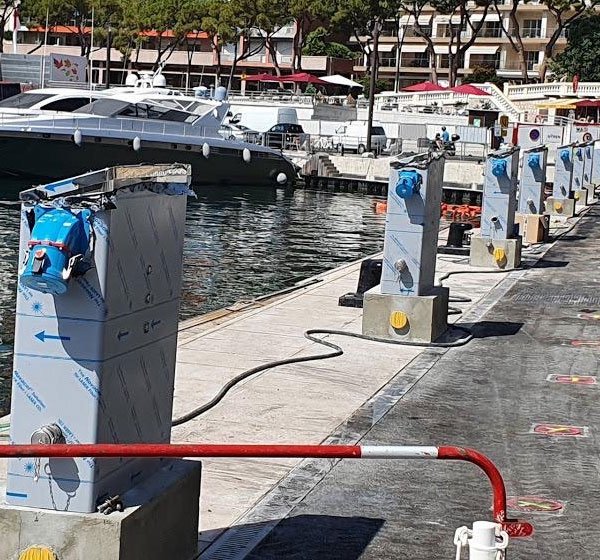
Contents
- Introduction
- Decarbonization and Green Shipping
- Digitalization and Smart Shipping
- Autonomous Vessels
- Advanced Propulsion Systems
- Port Infrastructure and Logistics
- Regulatory Changes and Compliance
- Challenges and Opportunities
- Conclusion
1. Introduction
The shipping industry is undergoing a transformative period, driven by technological advancements, environmental concerns, and evolving regulatory frameworks. The future of shipping promises to be more sustainable, efficient, and innovative. This article explores the key trends and innovations shaping the future of the maritime sector.
2. Decarbonization and Green Shipping
Greenhouse Gas Reduction
- IMO 2050 Targets: The International Maritime Organization (IMO) has set ambitious targets to reduce greenhouse gas (GHG) emissions by 50% by 2050 compared to 2008 levels.
- Alternative Fuels: The adoption of alternative fuels such as LNG, hydrogen, ammonia, and biofuels is crucial for meeting these targets.
Energy Efficiency
- Wind-Assisted Propulsion: Technologies such as rotor sails and wing sails harness wind power to reduce fuel consumption.
- Energy-Saving Devices (ESDs): Innovations like hull modifications, air lubrication systems, and advanced propeller designs enhance fuel efficiency.
Electric and Hybrid Vessels
- Battery Technology: Advancements in battery technology are enabling the development of fully electric and hybrid vessels, particularly for short-sea shipping and ferries.
- Shore Power: Increased use of shore power reduces emissions while vessels are docked.
3. Digitalization and Smart Shipping
IoT and Big Data
- Predictive Maintenance: Sensors and IoT devices enable real-time monitoring of ship systems, predicting maintenance needs and preventing breakdowns.
- Operational Efficiency: Big data analytics optimize route planning, fuel consumption, and cargo handling, leading to cost savings and reduced environmental impact.
Blockchain Technology
- Transparency and Security: Blockchain provides a secure, transparent way to manage shipping documentation, reducing fraud and enhancing supply chain efficiency.
Artificial Intelligence (AI)
- Automation: AI-driven automation improves navigation, cargo handling, and administrative tasks, reducing human error and increasing efficiency.
4. Autonomous Vessels
Unmanned Ships
- Development: Companies are developing fully autonomous ships capable of navigating and operating without human intervention.
- Regulations: The IMO and other bodies are working on regulatory frameworks to ensure the safe and secure operation of autonomous vessels.
Remote-Controlled Ships
- Operation Centres: Ships can be remotely controlled from shore-based operation centres, allowing for real-time decision-making and monitoring.
5. Advanced Propulsion Systems
Next-Generation Engines
- Dual-Fuel Engines: Engines capable of running on multiple types of fuel, including LNG and traditional marine diesel, offer flexibility and lower emissions.
- Hydrogen Fuel Cells: Research into hydrogen fuel cells promises a zero-emission propulsion option for future vessels.
Nuclear Propulsion
- Nuclear-Powered Ships: Although still controversial, nuclear propulsion offers high efficiency and zero emissions, with advancements in safety and waste management being critical for broader acceptance.
6. Port Infrastructure and Logistics
Smart Ports
- Automation: Automated cranes, guided vehicles, and drones streamline port operations, reducing turnaround times and increasing throughput.
- Digital Twins: Creating digital replicas of ports allows for advanced simulations and optimizations of port operations.
Sustainable Practices
- Green Ports: Initiatives such as electrified port equipment, renewable energy sources, and waste management systems contribute to the sustainability of port operations.
7. Regulatory Changes and Compliance
Stricter Environmental Regulations
- Sulphur Cap: The IMO 2020 sulphur cap limits the sulphur content in marine fuels to 0.5%, pushing the industry towards cleaner fuels and technologies.
- Carbon Intensity Indicator (CII): Measures and regulates the carbon intensity of ships, encouraging the adoption of energy-efficient technologies and practices.
Safety and Security Regulations
- Cybersecurity: With increasing digitalization, robust cybersecurity measures are essential to protect against cyber threats.
- Safety Standards: Continuous updates to safety regulations ensure that new technologies are integrated safely into maritime operations.
8. Challenges and Opportunities
Challenges
- High Costs: The adoption of new technologies and fuels often involves significant upfront investments.
- Regulatory Uncertainty: Navigating varying international regulations can be complex and costly.
- Technological Integration: Integrating new technologies with existing systems poses technical and operational challenges.
Opportunities
- Innovation: Advances in technology provide opportunities for enhanced efficiency, sustainability, and profitability.
- Sustainability: There is increasing demand for sustainable shipping practices from consumers and stakeholders.
- Global Trade: Innovations in shipping can facilitate global trade, opening new markets and improving supply chain resilience.
9. Conclusion
The future of shipping is poised to be more dynamic and sustainable, driven by technological innovation and a commitment to reducing environmental impact. From decarbonization efforts and digitalization to autonomous vessels and advanced propulsion systems, the maritime industry is embracing change to meet the demands of the future. While challenges remain, the opportunities for growth, efficiency, and sustainability are immense.
For more detailed insights and updates on the future of shipping, visit maritimehub.com



